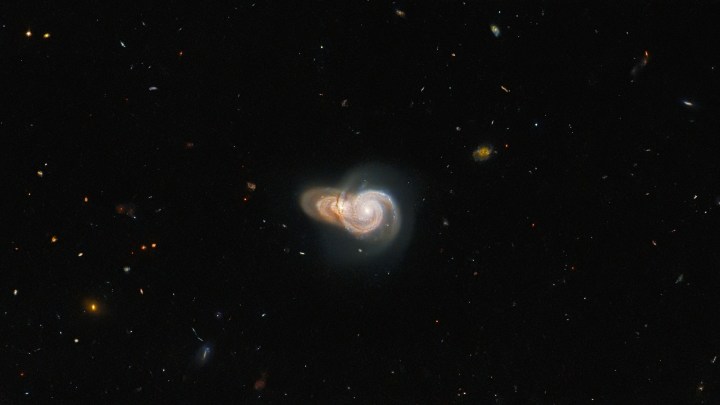This week’s image from the Hubble Space Telescope shows something of an optical illusion: two galaxies that appear to be colliding but are in fact merely overlapping by chance. Located more than a billion light-years away, the pair are two spiral galaxies, one face-on and one at an angle, which overlap to form a distinctive shape.
The galaxies, named SDSS J115331 and LEDA 2073461, were captured using Hubble’s Advanced Camera for Surveys instrument.

“Despite appearing to collide in this image, the alignment of the two galaxies is likely just by chance – the two are not actually interacting,” Hubble scientists write. “While these two galaxies might simply be ships that pass in the night, Hubble has captured a dazzling array of other, truly interacting galaxies.”
Some previous Hubble images of actually interacting galaxies include the galaxies NGC 7469 and IC 5283, which are close enough together to be known by a shared name, Arp 298. In this pair, one larger barred spiral galaxy is slowly merging with a smaller companion galaxy. And earlier this year, Hubble captured another galactic merger in a system known as the Angel Wing, where the merging galaxies have created a wing-like shape.
A Hubble image from last year showed how extreme conditions in galactic mergers can pull galaxies into different shapes as spiral arms can become distorted by the enormous gravitational forces involved in interactions. These interactions can result in streams of matter flowing between two interacting galaxies as they move close together.
Finally, one of Hubble’s most impressive images of galaxies interacting has to be its portrait of an object called NCG 1741, where no less than four dwarf galaxies are found within 75,000 light-years of each other. All four of these galaxies would fit within the space taken up by the Milky Way, and eventually, the entire group is predicted to end up as one single merged galaxy.



